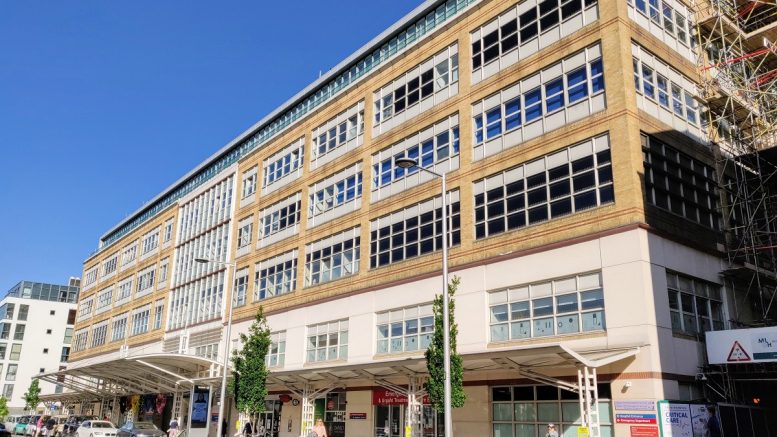Almost everyone who has ever visited a hospital has either got lost, or at the very least, had to ask for directions at some point. This is not just frustrating, stressful and time consuming, it also wastes money. Missed appointments, or arriving late, and staff being stopped by people asking for directions – all use up hospital resources.
Patients and their families are often in a raised state of anxiety, leading many to misjudge journey times and struggle with signage and on-wall maps. More than 85% of patients ask for directions when they go to a hospital or other public health facility, and 30% of first-time visitors get lost. (Source: Deloitte Digital)
This is stressful, and according to research by US wayfinding consultants Carpman and Grant (2001): “Stress caused by disorientation may result in feelings of helplessness, raised blood pressure, headaches, increased physical exertion, and fatigue. In addition, patients may be affected by the wayfinding troubles of visitors who, because they became lost, may have less time to spend with patients.”
Wayfinding systems can ease stress by providing easy-to-follow signage and legible directions, but navigating hospital sites can be challenging.
How technology is changing Wayfinding
Global positioning systems are part of everyday life. Millions of people and vehicles are guided down roads and pavements every day by reliable digital navigation. It is an obvious next step to take this digital navigation indoors, enabling patients and other visitors to navigate from outside the hospital all the way to the specific location they need—whether that is a bed on a ward, a consulting room, the café, or the pharmacy—and adding much more value. Essentially technology can create a sat-nav for indoors, not just outside. But unlike car sat-nav, the system is accurate to 1-2metres as the ‘sensors’ are within the hospital (not 12,000 miles away in space).
One example is the BuzzStreets Wayfinding system, already being trialled in a number of hospitals including the Chelsea and Westminster in London. BuzzStreets helps visitors navigate through the hospital providing a more independent experience as the navigation app can personalise the route: the app can choose the fastest or the least busy route; if you want/need to avoid stairs, the app will show you how; it can even highlight interesting features (such as art on the corridor walls) along the way.
Digital indoor navigation is an important step forward in saving hospitals time and money: many times each day, doctors, nurses and assistants are stopped (and therefore delayed) by visitors asking for directions, and patients are often late for appointments as they are lost within the hospital. This has financial and resource management implications.
“The BuzzStreets pilot project has already shown that the app reduces frustration for staff and visitors alike. It helps reduce the anxiety of patients and visitors trying to find their way in the hospital, which previously required contact with multiple different staff. Overall, we’ve seen that the app helps save resources, improve patient outcomes, and enhances the entire hospital experience for patients and their families,” says Vanessa Sloane, Deputy Chief Nurse at Chelsea and Westminster Hospital NHS Foundation Trust.
Wayfinding helps hospital staff too
Research involving UK teaching hospitals looking at doctors’ expectations and experiences noted that many participants mentioned getting lost and reported that, particularly when working on large sites, route optimisation was a vital part of task prioritisation, and that this was most important during crash calls. These are situations where staff are under time pressure and may be called to a ward that they have not been to before. Almost half of participants reported becoming lost on the way to a crash call.
One participant said: “Crash calls are often slowed when you don’t know where it is. Ward names can give no indication of where they are. Even registrars get lost sometimes.” Another participant reported: “Lots of experiences getting lost, need to ask nurses or hope you bump into someone else on a crash call. Even when you know where to go, you often don’t go the best way.” (Source: British Medical Journal)
More than just A to B
The advantage of indoor navigation apps is that the system can be much more than a reliable way to move from A to B. Other services—such as appointments, examination results, general hospital information, spaces available in the parking areas—can also be incorporated into a single mobile application. For example, BuzzStreets includes features such as a communication system between patient and doctor, the possibility of scheduling appointments, receiving medical scans and prescriptions in the app, heat maps, contextual notification, updated and edited locations, appointment reminders, and multilingual voice guidance.
Additionally, the location and navigation system allows for the collection of information to adapt the hospital to the flow of people who attend it, thus avoiding crowds of people in the same area. Collecting this data is also incredibly useful for facilities management: if a route is consistently busy or over-crowded, but another is always empty, steps can be taken to help change this either permanently or at specific times of day. With this knowledge, it is much easier to ensure that the experience for everyone (staff, patients and visitors) is smoother, easier and more efficient. In turn this results in financial savings.
Tracking equipment
Digital Wayfinding systems can allow hospital staff to trace equipment that is regularly moved around a hospital (e.g. wheelchairs) thus avoiding time wasted searching for them, or considering an item lost as no one knows where it is, and so a new one is ordered. Again, a saving of both time and money.
Patient safety
One of a hospital’s many responsibilities is the daily safety management of patients with mental health problems/diseases (Parkinson, circumstantial or profound amnesia, Alzheimer’s, etc.) who may become lost within healthcare buildings during hospitalisation. A digital navigation system, that allows these patients to be tracked and helps staff who encounter them to aid them back to their ward, can help ensure these patients do not miss out on the care they need.
Hygiene help
A digital Wayfinding system can also help with cleaning by helping plan where in the hospital it is needed most. According to a 2019 survey, 97% of respondents felt that their NHS room or ward (in England) was either very clean (69%) or fairly clean (28%) [Source: Statista]. A digital navigation system that gathers information about routes and traffic of patients and professionals can assist with a hospital’s cleaning and disinfection routines by identifying the areas of the hospital experiencing the highest levels of traffic, the type of traffic, and the dayparts where traffic is heaviest. This information allows managers to efficiently organise cleaning staff and target areas requiring more frequent attention.
Conclusion
The hospital managers I have spoken to in both the UK and Portugal, estimate the cost of poor Wayfinding, for each hospital, each year to be over a million Euros. Digital location and navigation systems can help to reduce demands on time, money and resources.
About the author
Joe Fernandes, founder and CEO of BuzzStreets, an award-winning navigation platform, that enables organisations (hospitals, shopping malls, airports, offices, stadiums, etc.) to offer their customers an indoor way-finder that allows them to navigate inside the building. The client arrives at the entrance or reception and then uses the bespoke app to navigate to the specific location (room, shop, check-in, office, or even seat) they need. BuzzStreets also supplies movement analytics that can help improve building efficiency and keep track of vital equipment. www.buzzstreets.com





